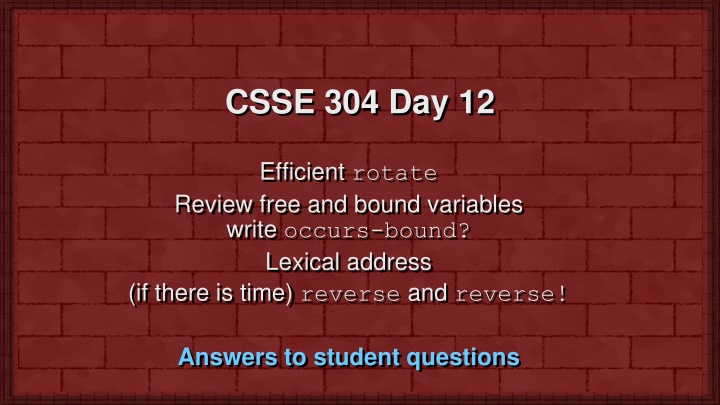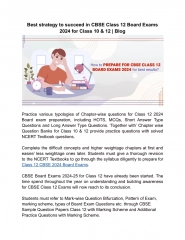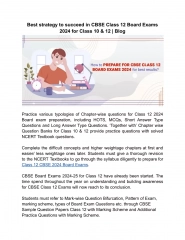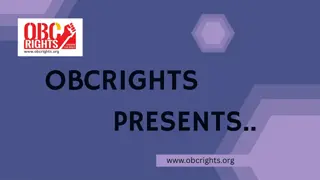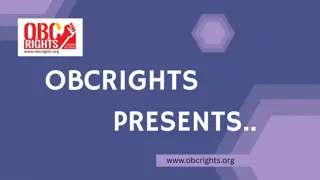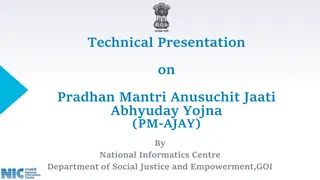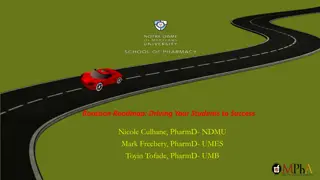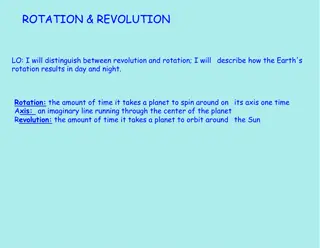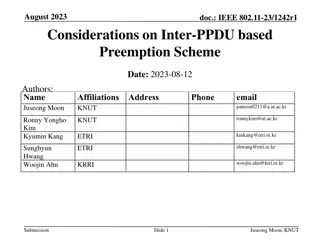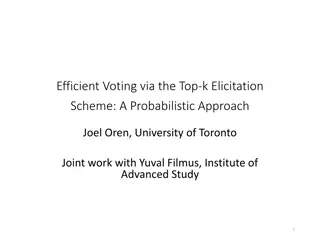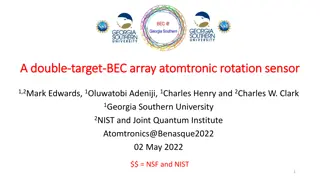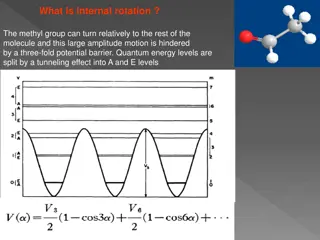Efficient Solutions for List Rotation in Scheme Programming
Consider efficient solutions for list rotation in Scheme programming, exploring different approaches to rotating lists, analyzing proposed solutions, and addressing student questions regarding free and bound variables, lexical addressing, and list manipulation. Dive into lambda calculus expressions and their types, with visuals to aid understanding.
Download Presentation

Please find below an Image/Link to download the presentation.
The content on the website is provided AS IS for your information and personal use only. It may not be sold, licensed, or shared on other websites without obtaining consent from the author.If you encounter any issues during the download, it is possible that the publisher has removed the file from their server.
You are allowed to download the files provided on this website for personal or commercial use, subject to the condition that they are used lawfully. All files are the property of their respective owners.
The content on the website is provided AS IS for your information and personal use only. It may not be sold, licensed, or shared on other websites without obtaining consent from the author.
E N D
Presentation Transcript
CSSE 304 Day 12 Efficient rotate Review free and bound variables write occurs-bound? Lexical address (if there is time) reverse and reverse! Answers to student questions
Rotate Consider this proposed solution (define rotate ; rotate the last list ; element to the beginning (lambda (los) (let loop ([los los] [sofar '()]) (cond [(null? los) los] [(null? (cdr los)) ;one-element list (cons (car los) sofar)] [else ; build up the "all but last" list (loop (cdr los) (append sofar (list (car los))))]))))
Rotate Consider another solution (define rotate ; build up list in reverse ; order, then reverse it (lambda (los) (let loop ([los los] [sofar '()]) (cond [(null? los) los] [(null? (cdr los)) ;one-element list (cons (car los) (reverse sofar))] [else ; build "all but last" in reverse (loop (cdr los) (cons (car los) sofar))]))))
Rotate an experiment (define make-long-list ; make a list of n different numbers. (lambda (n) (if (zero? n) '() (cons n (make-long-list (sub1 n)))))) > (define long (make-long-list 30000)) > (begin (collect)(time (rotate-linear long)) (collect) (time (rotate long)) 'done) (time (rotate-linear long)) no collections 0 ms elapsed cpu time 2 ms elapsed real time 480040 bytes allocated (time (rotate long)) 869 collections 3183 ms elapsed cpu time, including 127 ms collecting 3187 ms elapsed real time, including 204 ms collecting 3732622096 bytes allocated, including 3729785280 bytes reclaimed done >
A simpler rotate (define rotate (lambda (L) (if (null? L) '() (let ([rev (reverse L)]) (cons (car rev) (reverse (cdr rev)))))))
Recap: lambda-calculus expressions <LcExpr> ::= <identifier> | (lambda (<identifier>) <LcExpr>) | ( <LcExpr> <LcExpr> ) We call these three types of expressions variable uses, abstractions, and applications. Derive((lambda (x) (x y)) z) For now we just treat expressions as a syntactic construct. We will consider the meanings of these expressions later.
Variable xoccurs free in the LcExp e iff one of the following is true: F1. e is a variable, and e is the same as x. F2. e is an abstraction ( (y) e'), where y is different from x and x occurs free in e'. F3. e is an application (e1 e2) where x occurs free in e1 or in e2. For now, this is mainly about applying recursive rules <LcExpr> ::= <identifier> | (lambda (<identifier>) <LcExpr>) | ( <LcExpr> <LcExpr> ) Variable xoccurs bound in the LcExp e iff one of the following is true: B1. e is an abstraction ( (y) e'), where x occurs bound in e', or x and y are the same variable and x occurs free in e'. B2. e is an application (e1 e2) where x occurs bound in e1 or in e2.
When dealing with the syntax or meaning of a program, we Follow the _grammar_
Code for occurs-bound? Variable xoccurs bound in the LcExp e iff one of the following is true: B1. e is an abstraction ( (y) e'), where x occurs bound in e', or x and y are the same variable andx occurs free in e'. B2. e is an application (e1 e2) where x occurs bound in e1 or in e2. <LcExpr> ::= <identifier> | (lambda (<identifier>) <LcExpr>) | ( <LcExpr> <LcExpr> ) Let's follow the grammar to write (occurs-bound? sym exp) (define occurs-bound? (lambda (sym exp)
lexical depth and lexical address What are they? What are they good for?
lexical depth and lexical address The lexical depth of a bound variable occurrence is the number of levels of nested declarations between it and its declaration. In (lambda (z) (lambda (x) (lambda (y) (x y)))) the occurrence of y has depth 0 the occurrence of x has depth 1. There are no occurrences of z. This can used by the Scheme run-time system to make looking up a local variable's value be faster. More on that later.
lexical depth and lexical address Besides lexical depth, the other part of a variable s lexical address is its position within its declaration list. In (lambda (x z) (lambda (y) ((x y) z))) The occurrence of x has depth 1 and position 0. The occurrence of y has depth 0 and position 0. The occurrence of z has depth 1 and position 1.
lexical address example (lexical-address '(lambda (a b c) (if (eq? b c) ((lambda (c) (cons a c)) a) b))) You will write lexical-address as part of A10. Also un-lexical-address. (lambda (a b c) (if ((: free eq?) (: 0 1) (: 0 2)) ((lambda (c) ((: free cons) (: 1 0) (: 0 0))) (: 0 0)) (: 0 1)))
lexical address exercises (lexical-address '((lambda (x y) (((lambda (z) (lambda (w y) (+ x z w y))) (list w x y z)) (+ x y z))) (y z))) Exercise 1 (lexical-address '(let ([a 3] [b 4]) (let ([a (+ b 2)] [c a]) (+ a b c)))) Exercise 2
lexical address solution 1 (lexical-address '((lambda (x y) (((lambda (z) (lambda (w y) (+ x z w y))) (list w x y z)) (+ x y z))) (y z))) ((lambda (x y) (((lambda (z) (lambda (w y) ((: free +) (: 2 0) (: 1 0) (: 0 0) (: 0 1)))) ((: free list) (: free w) (: 0 0) (: 0 1) (: free z))) ((: free +) (: 0 0) (: 0 1) (: free z)))) ((: free y) (: free z)))
lexical address solution 2 (lexical-address '(let ([a 3] [b 4]) (let ([a (+ b 2)] [c a]) (+ a b c)))) (let ((a 3) (b 4)) (let ((a ((: free +) (: 0 1) 2)) (c (: 0 0))) ((: free +) (: 0 0) (: 1 1) (: 0 1))))
In-class exercise (if there is time) write reverse and reverse! procedures For reverse!, you will need to use set-cdr! Both should be O(n). These transcripts might help you to distinguish between them. Do this with another student or two.
